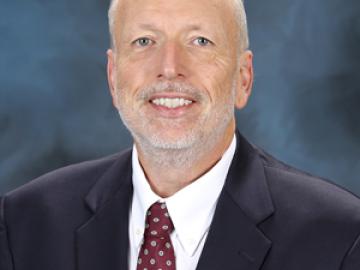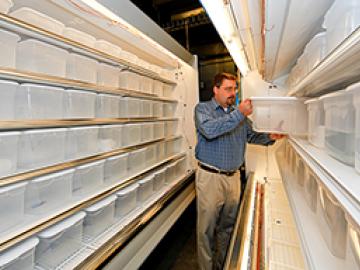Filter News
Area of Research
- (-) Clean Energy (20)
- (-) Materials Synthesis from Atoms to Systems (8)
- (-) National Security (2)
- Advanced Manufacturing (4)
- Biological Systems (3)
- Biology and Soft Matter (3)
- Building Technologies (3)
- Chemical and Engineering Materials (2)
- Chemistry and Physics at Interfaces (5)
- Climate and Environmental Systems (4)
- Computational Biology (1)
- Computational Chemistry (4)
- Computational Engineering (1)
- Computer Science (1)
- Earth Sciences (1)
- Energy Frontier Research Centers (6)
- Fuel Cycle Science and Technology (1)
- Functional Materials for Energy (8)
- Fusion and Fission (1)
- Geographic Information Science and Technology (1)
- Isotopes (1)
- Materials (33)
- Materials for Computing (7)
- Materials Under Extremes (5)
- Neutron Data Analysis and Visualization (2)
- Neutron Science (7)
- Nuclear Science and Technology (5)
- Nuclear Systems Technology (1)
- Quantum Condensed Matter (2)
- Renewable Energy (1)
- Sensors and Controls (1)
- Supercomputing (15)
- Transportation Systems (3)
Media Contacts
ORNL drone and geospatial team becomes first to map the Coca River in the Amazon basin as erosion and sediment threaten Ecuador’s lands.

Electric vehicles can drive longer distances if their lithium-ion batteries deliver more energy in a lighter package. A prime weight-loss candidate is the current collector, a component that often adds 10% to the weight of a battery cell without contributing energy.

Jack Orebaugh, a forensic anthropology major at the University of Tennessee, Knoxville, has a big heart for families with missing loved ones. When someone disappears in an area of dense vegetation, search and recovery efforts can be difficult, especially when a missing person’s last location is unknown. Recognizing the agony of not knowing what happened to a family or friend, Orebaugh decided to use his internship at the Department of Energy’s Oak Ridge National Laboratory to find better ways to search for lost and deceased people using cameras and drones.




Researchers at the Department of Energy’s Oak Ridge National Laboratory have demonstrated an additive manufacturing method to control the structure and properties of metal components with precision unmatched by conventional manufacturing processes. Ryan D...







